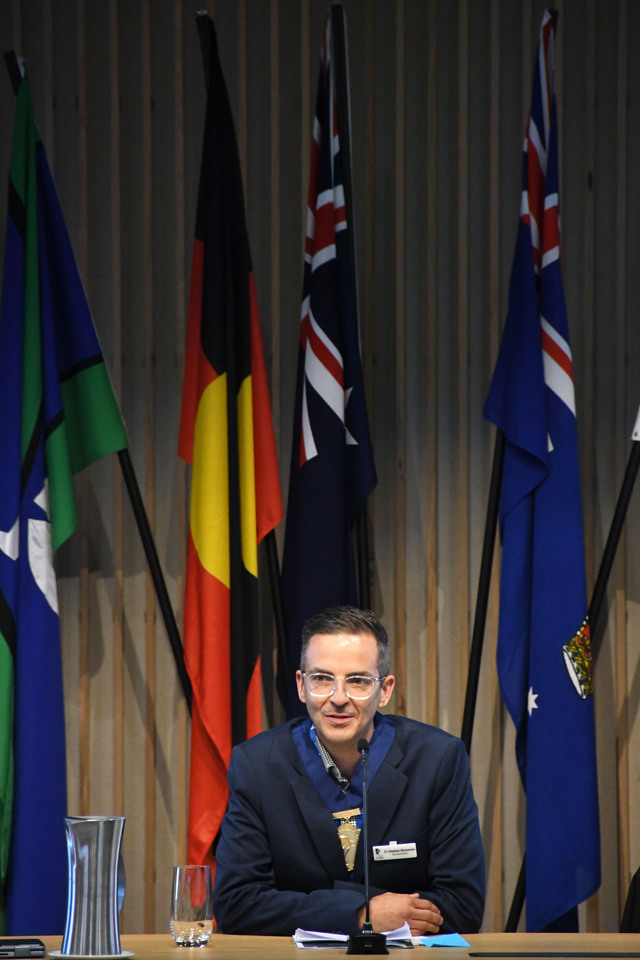Local real estate agents in Casey said the advertising costs on realestate.com.au had surged over the years, with one describing the pricing as “ridiculous and out of control”.
They acknowledged the market reach of the platform but said its pricing model of advertising costs had little flexibility and transparency, with costs now reaching over $2,500 per property in suburbs like Cranbourne.
Some agents are also encouraging vendors to consider alternative platforms to break out of the cost surge.
The claims came amid the Australian Competition and Consumer Commission (ACCC)’s recent investigation into digital property advertising company REA Group, which is best known for operating the realestate.com.au platform.
The $32 billion ASX-listed giant confirmed to its shareholders on 27 May that it was being investigated by the ACCC. The consumer watchdog required REA to provide information regarding certain subscription offerings.
A spokesperson of ACCC said the investigation is at an early stage, and they’re yet to form a view.
John Deo, chief executive officer of LJ Hooker Casey, said REA put their prices up every year, and there was nothing they could do about it.
“It’s just getting ridiculous and getting out of control. The premier listing in our area (Hampton Park) is nearly $2,600. It’s the biggest thing on our marketing budget,” he said.
“Everything else is all a couple of $100. Our average marketing campaign is nearly $4,500. But our commission is only like $8,000 to $10,000. The advertising is nearly at 45 per cent.
“It’s going up in July. It’s going to be close to $2,800 or $2,900.
“And I don’t understand how their cost goes up because it’s purely Internet.”
Jo Mooney, director of Mooney & Co Estate Agents in Cranbourne, noted that the advertising costs on the platform increased about seven to eight per cent a year.
“They quote their market strengths,” she said.
She also noted that they were getting fewer inquiries now through the platform than they had in a very long time.
“And vendors are paying more to be on there,” she said.
Both Mr Deo and Ms Mooney pointed out the lack of transparency on the pricing model of its advertising fees. They tried to figure it out, but still, they had no idea.
Realestate.com.au offers different subscription tiers for agencies, which influence the base cost of listings. According to Ms Mooney, most agencies are on the Premiere +, which provides the biggest ads, to remain competitive.
It is understood that the cost for a real estate agency to list a property on realestate.com.au varies based on several factors, including the agency’s subscription tier and the property’s location, but when the final numbers showed up, the agents found it difficult to pin down a coherent pattern.
“It’s postcode pricing, to a degree, but if it’s postcode pricing, should all be the same for one postcode, but it’s not,” Ms Mooney said.
For example, the cost of a Premiere for Cranbourne, Cranbourne East, North, and South is about $2,500, but Botanic Ridge, with the same postcode, is a little bit cheaper, which doesn’t make sense to Ms Mooney because the median house price there is higher than Cranbourne.
Clyde, the abutting suburb with a different postcode, has a very similar median housing price to Cranbourne, but the advertising cost on a Premiere is about $1,200.
The pricing model bewildered Mr Deo as he discovered Hampton Park and Berwick share the same price for advertising, but the median house price in Berwick is nearly double that of Hampton Park.
“You can go five kilometres in towards the city, and the prices are averaging $ 1 million, and they’re paying the same price as us,” he said.
“It’s a very unfair system, the way they do the pricing.”
Ms Mooney said sellers don’t feel like they have an option not to go to realestate.com.au, and the surging price was putting pressure on the agencies to lower commissions to offset the cost of the marketing.
“We used to pay for the marketing. We can’t afford to now because it’s such a substantial amount for each property,” she said.
“If you’re carrying multiple properties at all times, that’s a hell of a lot of money.”
She also said part of the problem was that agencies were locked in one tier of marketing subscription for twelve months, which lacked flexibility.
“What we should be able to do, and that would give home sellers control over what they actually invest and spend in marketing their property, is to take different-sized ads available on realestate.com.au and say to homeowners, how would you like your property to be marketed? Do you just want a standard ad? Do you want a feature? Do you want a highlight? Do you want Premiere? What do you want to do?” she said.
“Because that way, they’ve got some sort of control.”
Dean Tucker, the director of First National Real Estate Finning in Cranbourne, said there should be a conversation to educate people into choosing alternative property advertising.
“I always say it’s a two-pronged conversation. There’s the conversation about trying to sell the house, and then there’s the conversation about promoting the office or the agent. They’re two totally different things,” he said.
“The big ads are really about promoting the office and the agent. Selling the house is a totally different thing because you can sell the house with the smallest ad if the price is right, and the house looks nice, and it’s in the spot where people want to buy it.”
He said there was no end to the price surge because the desire to get more exposure would lead to more varied and expensive packages.
“Look, at the end of the day, there’s nothing wrong, I suppose, with capitalism and that everybody wants to jump onto the same platform and then that they can effectively charge what they want,” he said.
“I think the deal has to be trying to educate people into choosing alternatives.”
Speaking about the ACCC’s investigation into the group, Mr Tucker said he was interested to see what the watchdog was going to do.
“I’d love it for them to go put some regulation on that market,” he said.
Ms Mooney said every business deserves to make money, but there is a real issue here with the group.
“The issue is that they are strangling the market. And the market is numb and bad,” she said.
REA was contacted for comments.
In its announcement to the shareholders, it says the group is committed to “providing choice, value and flexibility to its customers and consumers, and remains focused on delivering products and services that improve the property experience of buyers, sellers and renters”.
“The value that REA provides is underpinned by the 12.3 million people who visited realestate.com.au each month on average in the March quarter, with 6.4 million exclusively using realestate.com.au1,” it states.
“REA is cooperating fully with the ACCC and is unable to comment further for confidentiality reasons. REA will continue to comply with its disclosure obligations and will update the market on this matter as appropriate.”
The spokesperson of ACCC said the watchdog does not normally make comments on its ongoing investigations, noting that it conducts such work on a confidential basis.
“Naturally, the ACCC is concerned to ensure there is strong competition in the important real estate sector,” they said.
“As the investigation is ongoing, the ACCC won’t comment further at this time.”
Generally speaking, businesses are free to independently set their own prices as they wish.
The ACCC has no role in setting or regulating the prices of real estate ads.






